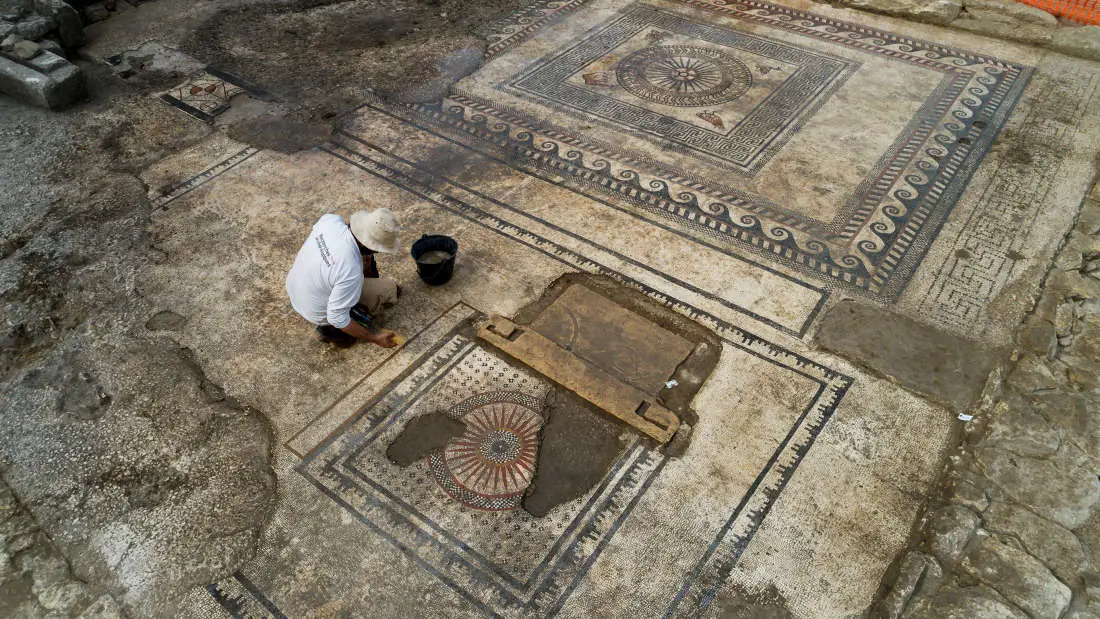|
Mosaics Signal Return of 'Lost' Roman Town
April 9, 2017
It had existed only in writings elsewhere, but the ancient Roman town of Ucetia is once again in focus, this time by modern archaeologists. Romans, notably Julius Caesar, conquered France (which was then called Gaul) in the 1st Century B.C. The area then became, like most other parts of the Roman Republic and then the Roman Empire, a model of Roman architecture and civilization. By far the find that has researchers most excited is the remains of a few mosaics, featuring geometrical patterns and representations of animals, such as dolphins, ducks, eagles, fawns, and owls. One of the mosaics is in the remains of 2,700-square-foot public building that dates to the end of the 1st Century. Also found in the building were remains of a hypocaust, a mechanism to provide hot water to the fabled Roman baths. All of the finds will be taken away in order to make room for a boarding school, which is scheduled to open in 2019. |
Social Studies for Kids |



 During construction on a school near the modern town of Uzés, in the south of France, researchers from the French National Institute for Preventive Archaeological Research found mosaics, building fragments, and other remains of the Roman settlement, known to modernity only as a name on a stone slab in the nearby town of Nîmes. The site measures more than 43,000 square feet and contains artifacts spanning seven centuries of Roman occupation.
During construction on a school near the modern town of Uzés, in the south of France, researchers from the French National Institute for Preventive Archaeological Research found mosaics, building fragments, and other remains of the Roman settlement, known to modernity only as a name on a stone slab in the nearby town of Nîmes. The site measures more than 43,000 square feet and contains artifacts spanning seven centuries of Roman occupation. 
